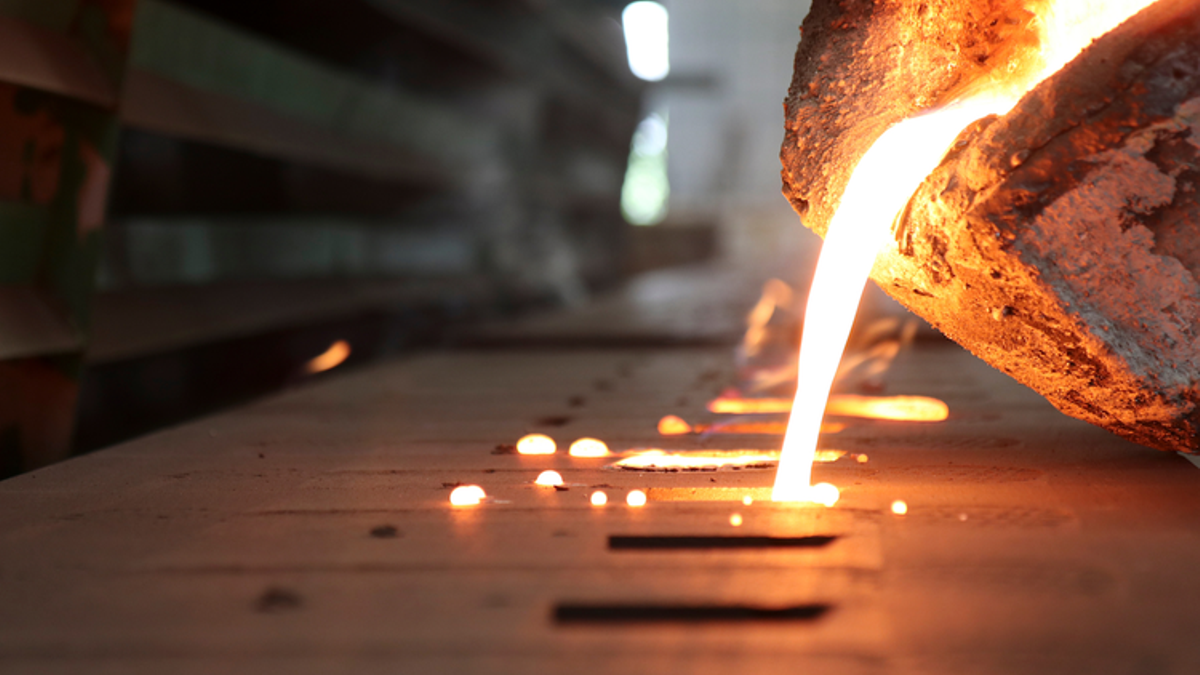
Building upon the information shared in our last Forge and Foundry Series post about sand casting, we now turn to the process of selecting and designing machines to specific sand casting operations.
Selecting the right shot blasting machine for your process and work piece means understanding how the work pieces and machine will interact. Here are common questions Rosler Metal Finishing receives when developing perfectly specified solutions for sand casting.
How do work piece
delicacy, size, and weight influence the machine choice?
Before choosing a machine, the following questions
must be asked:
- Are the parts sturdy, allowing for aggressive processing, or must they be handled gently, without any part-on-part contact?
- Is batch processing possible or must it be continuous?
- Which work piece handling system is best: rotary drum, troughed belt, wire mesh belt, overhead monorail system, or heavy-duty crane or trolley on rails for extremely heavy work pieces weighing several tons?
- Can the work pieces be handled by robot or is a custom-engineered shot blast system the best solution?
It is extremely important to find a supplier that
can offer a machine that is perfectly matched to the work piece
characteristics.
How can coarse
contaminants like sand lumps, broken off sprews, gates, risers, rebar, etc. be
discharged from the shot blast system?
Shot blast machines for foundry applications are
usually equipped with robust vibratory screen conveyors in place of the
standard augers. They allow the discharge of sand lumps, rebar, etc., and the
safe transfer of the mix of media and loose sand to the elevator. Machines
should also be equipped with a rotary screen drum at the elevator exit to
remove any larger particles from the media/sand mix, before it passes through
the media cleaning system.
Sand-casted parts entering a blast machine
Why is it so critical to
remove loose molding and core sand from the blast media, and how can this be
done?
Sand is extremely abrasive. Even a small amount of
sand (0.5-1 percent) in the media will cause the turbines and blast machine to wear
more quickly. There are known cases where, due to a poorly functioning media
cleaning system, the throwing blades had to be replaced every eight hours!
Demolding of a sand casting
Therefore, shot blast machines dealing with more than six percent sand in the blast media must be equipped with a combined dual drum magnetic separator for the safe removal of sand in the blast media and an air-wash separator taking out any remaining sand, broken down media, and dust.
How can blast machines
for foundry applications be protected against premature wear?
Tiny amounts of sand in the media, scale, and rust
from the raw castings as well as the use of granular blast media or large steel
shot create a highly abrasive environment for the shot blast machine and
turbines. Special precautions must be taken to prevent premature wear.
For example, the blast chamber should be made from
3/8th” (10 mm) thick manganese steel and additionally lined with replaceable
wear liners made from manganese steel or chilled iron castings with a thickness
of up to 5/8th” (16 mm). The thicker the wear liner package the longer the
machine life.
The Rosler Way
The Rosler way means that we work with our clients to learn about their process, develop a better surface finishing technique, and deliver a solution. Sand casting and shot blasting are no exception. Whatever sand castings your process includes, Rosler Metal Finishing can learn about your challenges to develop and deliver a solution. Contact us today to discuss your unique challenges.
The complete Forge & Foundry Series includes:
- Part 1 – Shot Blasting Systems.
- Part 2 – Efficient Recycling.
- Part 3 – Shot Blasting & Sand Castings.
- Part 4 – Selecting a Shot Blasting Machine for Sand Castings.
- Part 5 – Cleaning Features & Dust Precautions for Sand Castings.
- Part 6 – Selecting a Shot Blasting Machine for Die Castings.
- Part 7 – Selecting a Shot Blasting Machine for Forgings, Non-Sand Castings, and Powdered Metal Components.
- Part 8 – Frequently Used Shot Blasting Machines for Sand Castings.
- Part 9 – Frequently Used Shot Blasting Machines for Forgings, Non-Sand Castings, and Powdered Metal Components.
- Part 10 – Shot Blasting Machines Commonly Used for Die Castings.
- Part 11 – Top Mass Finishing machines for Cleaning Die Castings
- Part 12 – Media and Compound Selection, Effluent Handling Drive Success
Sign up for enews alerts to be notified of all Rosler blog posts!

